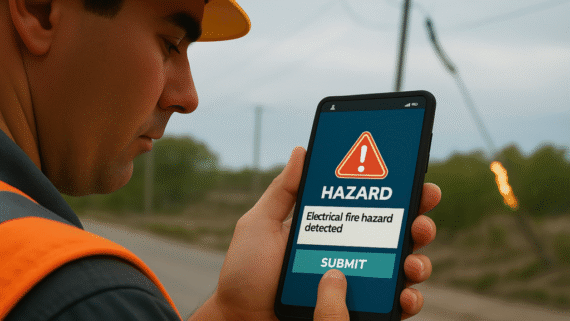
Safety Reflects Leadership
Leadership is a trait humanity respects. The more people respect, the more they’re prepared to do.
This article exposes the forgotten knowledge of mentorship and aims to bridge the gap between safety, influence, and technology. After reading this article you’ll consider influencial ways of training which will breathe a classic-autonomy into your organization that’s sure to improve you and your colleagues future.
Safety in Context
Safety’s not just about appeasing government regulation, it’s about conveying a message to your staff that you are taking the extra steps so they don’t fall. A good leader can be hard to spot, however bad ones stand out like a leaky steam valve. If your employees are second guessing, they’re not working…
Throughout the ages, authority has changed many times. First there were elders, then chieftains, oracles, chief artisans, pharaohs, kings, queens, daimyos, playwrights, lords, emperors, and now we’re exiting the president, or boss phase. I say exiting because companies all over are dropping these ancient tropes for more team inducing nomenclature. Which is proof of great corporate leaders acknowledging the cultural shift or shifting culture themselves.
The thing to note is authority has been eroded in the last century. Loyalties were questioned, nations formed and fell, while people were exploited. Combine that with the relatively new right to education and you have a completely different workforce disillusioned by a perilous past.

Empathy and Crucial Perspectives
What sets modern people aside from say miners in the 1600s, or riveters in the 1800s, is their aversion to authority. The horrid working conditions of the 1900s proved that being a part of a bigger structure didn’t guarantee your own wellbeing. And it’s true, this wasn’t a new lesson but coupled with education, it gives the new worker a skepticism that was otherwise drowned out by needs in the past.
The fact of the matter is many people work because they need to. It’s easy to assume everyone will want to work for society but their willingness to do so rests on what they assume they’ll be doing. If they think they’ll be abandoned, they’re not going to work in a confined space. If they are skeptical of lock out procedures, they’re less willing to work on that conveyor belt. And let’s not forget the pathogens people in the fast-food industry are exposed to just by facing the public every day.

What managers need to realize is people don’t need leaders like they used to. They’re not drawn to authority like a herdsman required a king to avenge him for border transgressions. It’s much different, they need money. That’s about it… At first… But a wise leader could build more.
Sure, there are many who can choose their occupation and even their company. Those are the lucky ones; and if we think of it relatively, they’re a drop in the ocean.
People have become individually pragmatic. They look out for themselves and colleagues, and that can create a ‘them vs authority’ atmosphere in a large organization. That has less to do with management and more to do with the disconnect that naturally happens in large systems.
So quite simply, a good leader needs to harness this new energy. It’s easy, the people essentially don’t want to be harmed in an avoidable way. Therefore, policies must be enacted to eliminate those possibilities.
Choosing Your Influential Leader
One of the best traits of a leader is picking other leaders to run things he cannot. So, one of the most important starts for an inspiring safety policy is to make sure your leaders are experienced at the task they oversee. To do this you need to:

- Promote from the ground up – Don’t just hire for a position that you can fill from your own stock. Sure, there’s lots of good diplomas and impressive resumes out there but do they really understand underwater welding like your forty-year veteran who has trouble breathing? No, they probably don’t, and your veteran could use a less physically demanding role. A role where they can tell your recruits why you should ascend slower, etc., etc.
- Ask around – Some people say all the right things to management but when it comes time to shine it was all just steam. Ask every employee who they feel has shared knowledge and would make a good leader. Many will answer with who they think will go easy on them, but the aggregated responses are invaluable.
- Try to Empathize – Imagine as hard as you can what it would be like to crawl into that coke oven and chip that asbestos rope. What tools would make that easier, and is it harder during certain weather, etc. etc. What your own mind comes up with might astonish you and make you realize the changes proposed weren’t so crazy after all.
These three methods are crucial and essentially autonomous after you’ve succeeded in your selection. Why? Because these veterans know, they know more than that third party consultant, and they probably know more than most government big picture staff can predict.
That’s not to say consultants aren’t knowledgeable, because they are, but your staff will listen to one of their own much more attentively. Thus, making it all the more valuable.
Your experienced staff can attribute real stories that resonate with the tasks your people will be performing every day. To them and you, this is priceless.

Autonomy Equals Economy
When I said it was autonomous before, what I meant was these leaders you’ve chosen can now pick the best people to fill various roles within their team; they can also help select safety training courses for your unique requirements. Which will in turn translate to fewer accidents and more respect for upper management.
You don’t have to do precisely what your leaders say, but their voice coupled with your HR team will allow you to keep your workers’ stake present. Perhaps some won’t see this at first, but in the long run, your safety track record will improve.
These are just simple procedures our ancestors used to train our youth. Fostering the communal setting and tapping into your vetern-workers renown is by far the easiest and best way to teach. These techniques have been lost with the education industry advertising courses that circumvent entry-level positions. But in reality, entry-level positions are still the most common jobs out there. You need boots on the ground.
So, what your carefully chosen leaders do is guarantee your safety policies will be more respected and better retained. They do this simply through influence. This influence and experience is the core of human experience and resonates in us all.
Maslow’s Hierarchy of Needs tells us that safety is as important, if not more than employment. So, we should never make an employee choose between the two. That would instantly erode their trust and make them question every order from there out. Naturally, all supervisors must be aware of this as well.
Monitoring Your Safety Policy
After your influential sergeants are in place, and your safety policy is plowing through risks unscathed, it’s important to monitor your program for problems. Do so by:

Speak with your staff, all of them: When the leader of a company is seen within the thick of it, it has resounding effects. This can generate so much respect it’s incredible. My favourite bosses always got dirty and lead by example, there’s a reason the word rally exists. Speaking candidly with your employees and creating open-door policies will not only promote empathy and understanding, but your staff will eventually alert you to problems you would otherwise never see.
Here’s some more ground-up mentality from one of the most prolific entrepreneurs in history:
“The folks on the front lines – the ones who actually talk to the customer – are the only ones who really know what’s going on out there.” Sam Walton, CEO of Walmart.
Sure, this quote is speaking of a different system than say an assembly line, but the founding principle is the same. Sam Walton is essentially saying that a frontline perspective trumps prediction. The very fact that this quote became so popular goes to show you how detached management has become. Yet the pendulum swings back, there are now many CEOs who are changing history with their empathetic and humbled approaches.
So that should be it. Now your foundations laid so you need to speak with staff in order to spot weathering. If there are problems arising, they could be attributed to people changing, and new circumstances which can be adjusted only after hearing or seeing them.
You may wonder why this article has a military sound to it. That’s because some of the best and worst leadership techniques were adopted in armies. In order to survive, these people had to work as one and follow rigorous procedures in order to act as a team.
In many of today’s factories, there are tons of moving parts that rely on procedure to predict what the other teammates are doing so they can harmonize accordingly.
That is how we must think of safety, safety is organizing chaos. It’s allowing our teammates and staff to get close to danger without fear and uncertainty. Like when you watch a thunderstorm from a cozy living room, safeguards and shelters are empowering, and when you empower your people, they will empower you.
Only after your employees feel safe will they view you as a viable leader. And once that’s achieved, they will be more inclined to do something extra, because you’ve already proven you’re willing to do the same.
Written by Jordan Kovacsik – BIS team member, author, and safety enthusiast who worked in the steel industry for a decade.






























